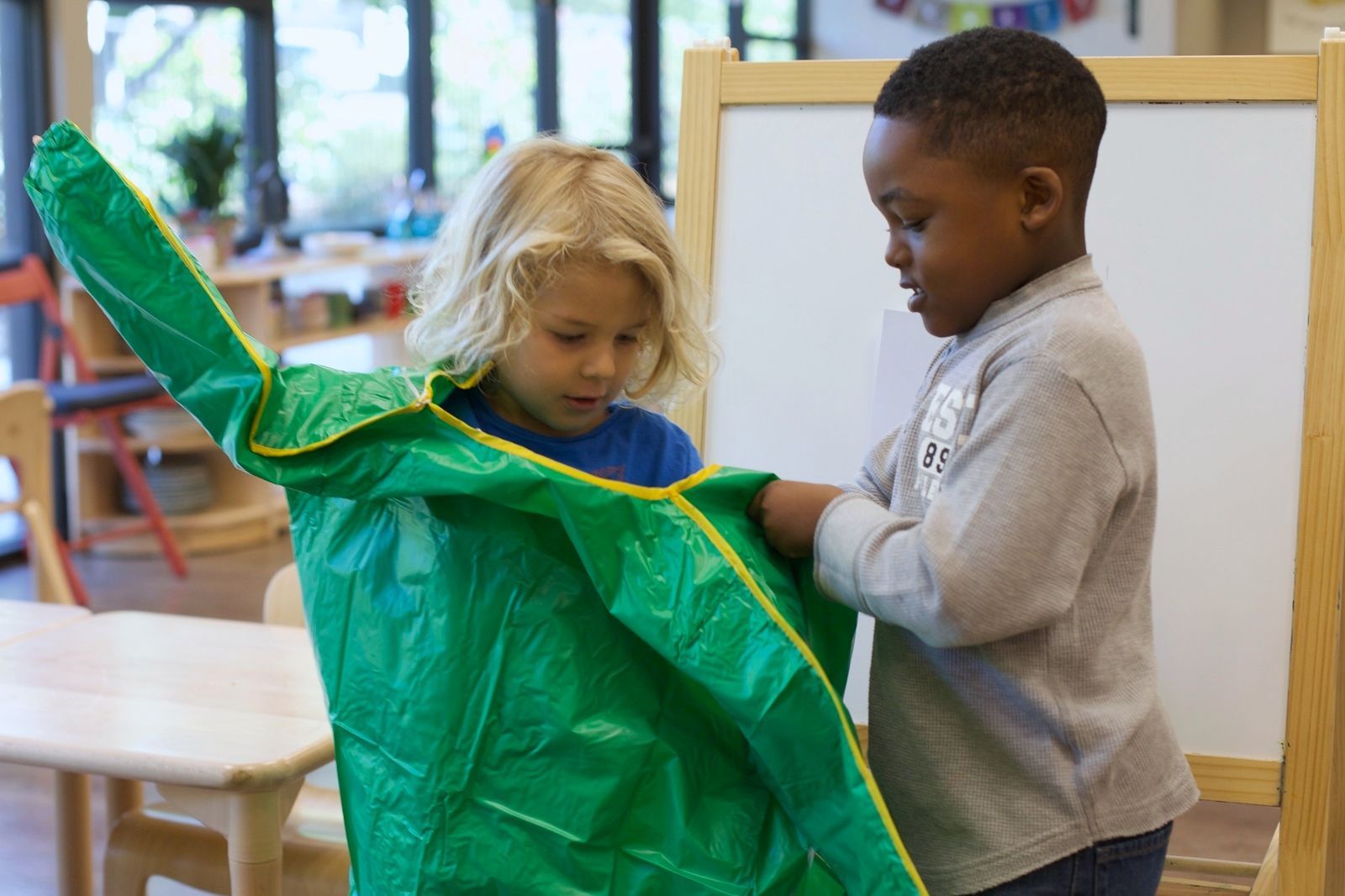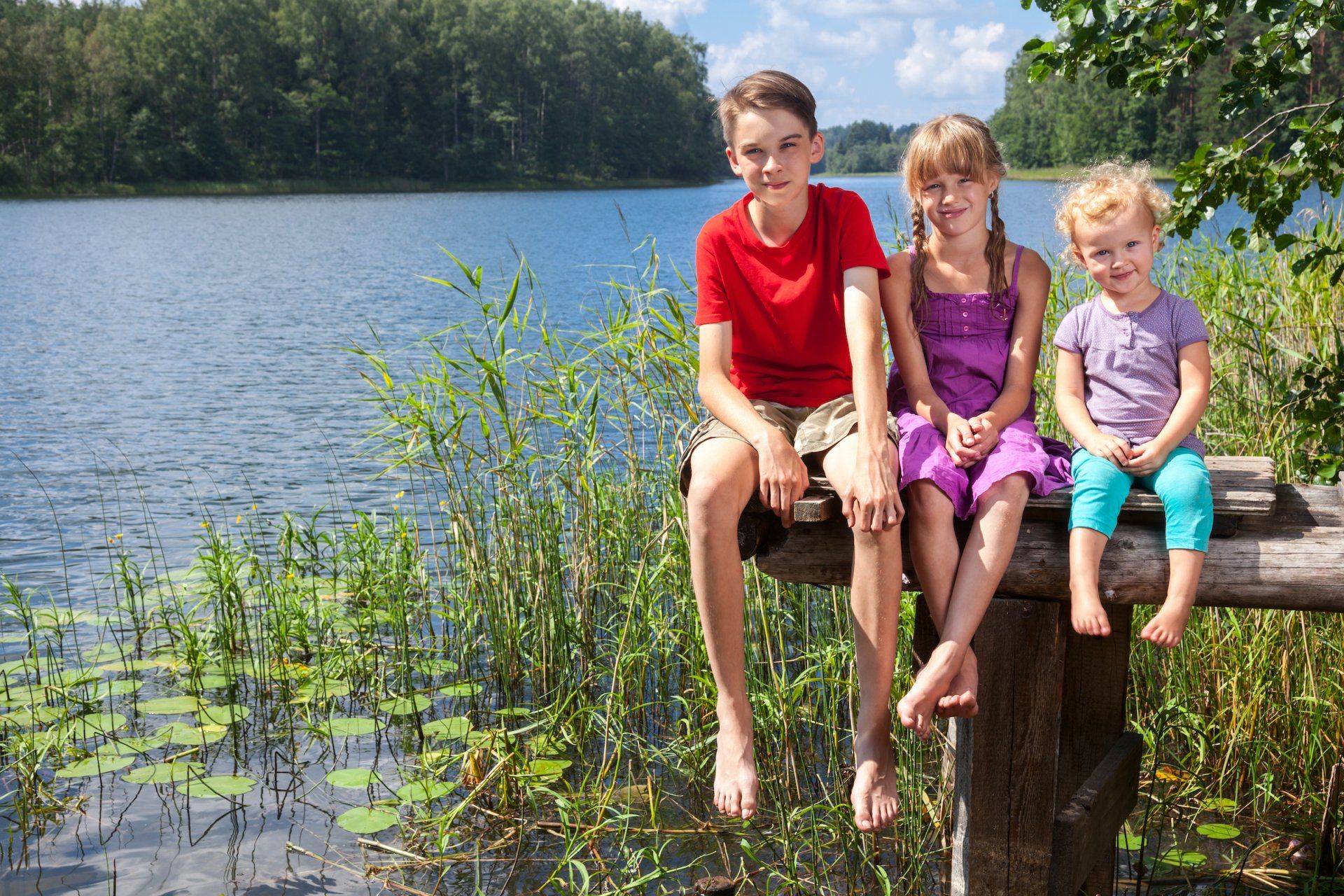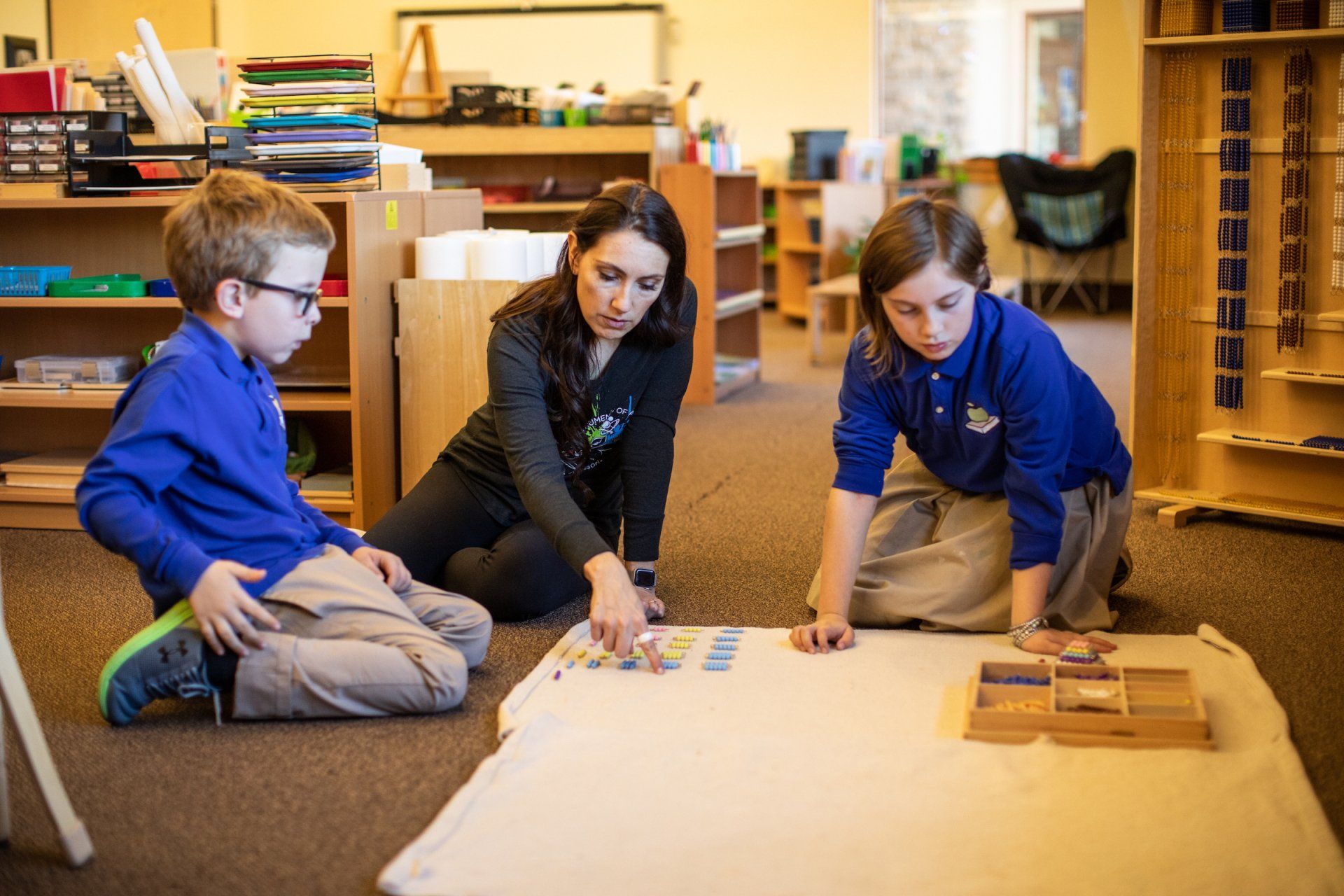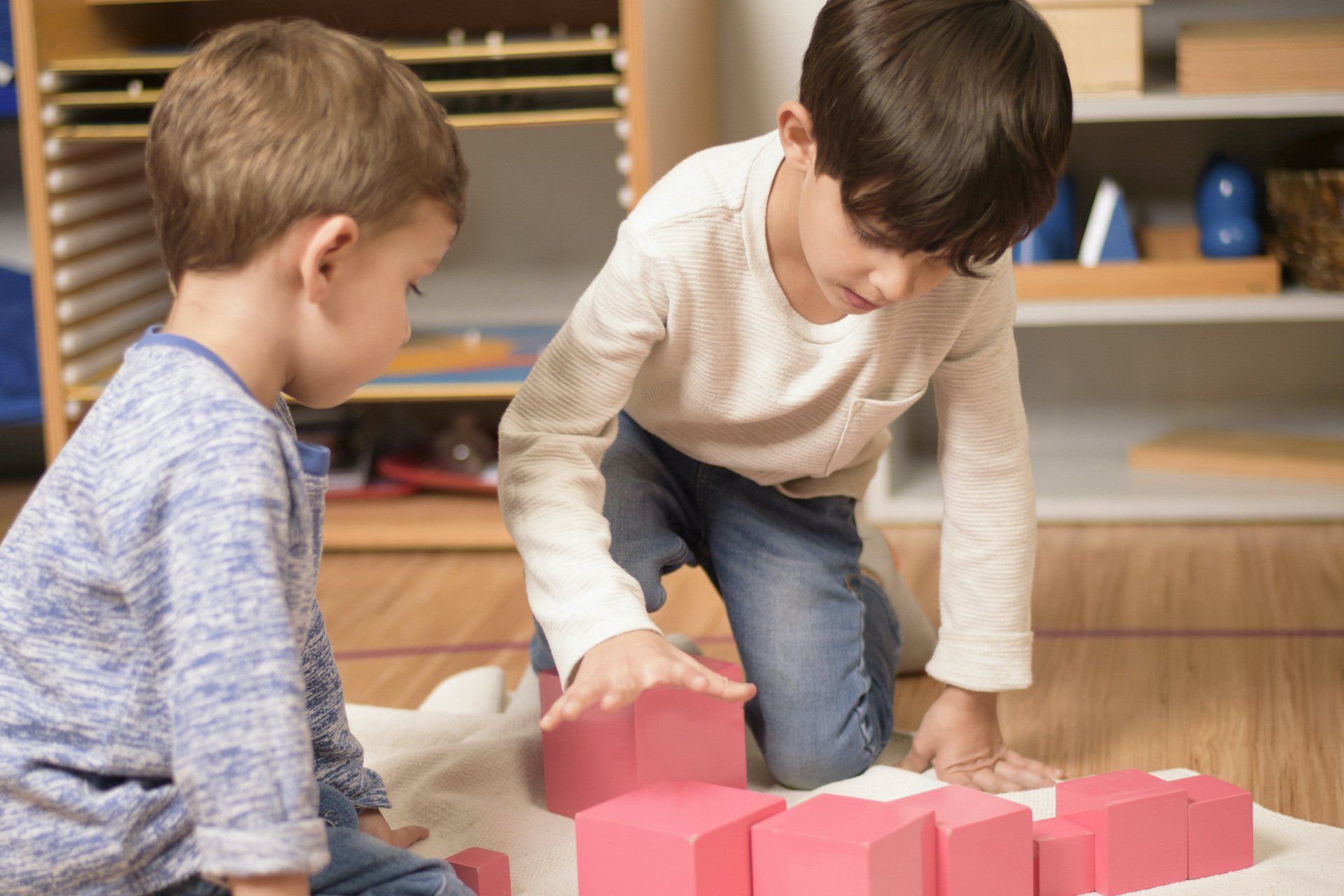Blog

14 Mar, 2024
Many public school systems offer kindergarten, and many parents are curious about this transitional year. Why should your child stay in Montessori for the kindergarten year? Learning for Mastery Montessori schools are intentionally structured utilizing a three-year cycle. There are many great benefits to this, but one of them is to provide third year students with opportunities that they will not have in other environments. Having spent the previous two years learning a multitude of skills in their classroom, the third year is about mastery. The Montessori curriculum is a series of carefully developed lessons and materials that are meant to cycle back to a culminating experience during the final year. All that time spent grasping knobbed cylinders, tracing metal insets, and practicing sandpaper letter formation? The kindergartner uses all that knowledge as they begin to write with paper and pencil. The years of early mathematical preparation? Now they get to use the golden beads (or perhaps the stamp game material) to learn to add and subtract numbers into the thousands (yes, as kindergartners!). Montessori’s early focus on teaching children sounds in lieu of letter names leads many children to begin reading by the time they are in kindergarten. Children as Independent Leaders Not only do guides observe children mastering these skills independently, but the children have the chance to teach to others. Educators across many settings will agree that once the student becomes the teacher, we can surmise that true mastery has been attained. So while your kindergarten child is teaching younger children how to do something, they are showing us just how well they know how to do it. Not only that - they are gaining confidence in a truly authentic way. No one needs to tell the child how well they are doing because they feel it themselves. When children teach children, it’s not just about knowledge being shared, but also about cultivating world citizens. Teaching each other is an act of kindness, and a way for children to practice helping others around them. Fueling the Spark In Montessori classrooms one of our greatest tasks is to keep the fire burning inside children’s minds. We structure our work so that children may follow their passions and learn deeply about things that matter to them. We see each child as an individual and think one-size-fits-all educational approaches tend to extinguish the joy of learning. Instead of drilling facts into children, we place materials before them so that they may discover the truths of the world themselves. Rather than asking them all to do the same thing at the same time, we value their choices and trust their educational process. It is the guide’s job to keep them on track, but they offer children the freedom that lets them deeply explore the learning that calls to their souls. Five Key Differences Between Montessori and Conventional Schooling

01 Jan, 2022
Learning about the planes of development isn’t just for Montessori educators. Understanding your child’s development can help at home, too. The First Plane: birth-6 years During this stage children absorb everything like sponges. They are, indeed, excellent examples if what Montessori called ‘The Absorbent Mind.’ This is a time in which we are able to utilize what Montessori called sensitive periods of learning. While each child is different, there are typical patterns that emerge in regards to brain development and general readiness to learn particular skills. During the first three years of this plane, all learning is done outside of the child’s conscious mind. They learn by exploring their senses and interacting with their environment. During the second half of the plane, from about 3-6 years, children enter the conscious stage of learning. They learn by using their hands, and specialized materials in the Montessori classroom were developed with this consideration. During this time, children have a wonderful sense of order. They are methodical and can appreciate the many steps involved in practical life lessons in their classrooms. The organization of the works on their classroom shelves is intentional, which appeals again to this sense of order. The first plane is a time in which children proclaim, “I can do it myself”; it is a time of physical independence. The Second Plane: 6-12 years During the elementary years children begin to look outside themselves. They suddenly develop a strong desire to form peer groups. Previously, during the first plane, a child would be content to focus on their own work while sitting near others. In the second plane, a child is compelled to actually work with their friends. It is during this time that children are ready to learn about collaboration. During the second plane there is a sudden and marked period of physical growth. This may be a contributing factor to the observation that many children of this age seem to lack an awareness of their body, often bumping into things and knocking things over. Children begin to lose their teeth around this time as well. Their sense of order and neatness tend to fade a bit during this plane. Throughout the second plane, children’s imaginations are ignited. Since Montessori education is based in reality, we find ways to deliver real information to children through storytelling and other similar methods. For example, when teaching children about the beginnings of our universe, Montessori schools use what is called a Great Lesson. The first Great Lesson is a dramatic story, told to children with the use of props, experiments, and dramatics (think: a black balloon filled with glitter is popped to illustrate the Big Bang, with bits of paper in a dish of water used while talking about particles gathering together). This lesson is fascinating for children in the way it is presented, but gives them basic information about the solar system, states of matter, and other important concepts. Children in the second plane have a voracious appetite for information, and are often drawn strongly to what we in Montessori call the cultural subjects: science, history, and geography. While we support their rapid language and mathematical growth during this time, we are also responsible for providing them with a variety of rich cultural lessons and experiences. It is important to note that children develop a sense of moral justice at this time. They are very concerned with what is fair, and creating the rules to a new game is often as important (if not more so) than playing the actual game itself. This is the period of time in which children are striving for intellectual independence. The Third Plane: 12-18 The third plane of development encompasses the adolescent years. During the second plane, children become aware of social connections, but in the third plane they are critical. During this time children rely heavily on their relationships with their peers. They feel a strong desire to remain independent from adults, although they are not quite ready to do this entirely. It is our job to find ways that allow them to experiment with independence while also providing a safe structure in which they may do so. Children in the third plane tend to require more sleep, and they sleep later than when they were younger. They long for authentic learning experiences, and Dr. Montessori imagined just that. Her ideas of Erdkinder (children of the earth) led her to contemplate a school setting that would support children’s development during this time. She imagined a farm school, in which children would work to keep the farm operational, but also contribute to planning and decision making while doing so. During the third plane children are refining their moral compass while developing a stronger sense of responsibility. The Fourth Plane: 18-24 The final plane is a time in which young adults are striving for financial independence. They are often living away from home for the first time, and use this time to figure out where they fit into their society. Many make choices to further their education and/or explore career paths. It is during the fourth plane that people begin to develop a truer sense of who they are as individuals. Each plane of development should be mindfully nurtured. If a child is able to experience one developmental phase in a rich and carefully prepared environment, they are ready to fully take on the next phase when it is time.
© 2024
Nido Montessori School
© 2024
Children's Workshop Montessori School



